You may have noticed we talk a lot about meditation and mindfulness on this blog. One of our readers tagged me on Facebook and asked if I could explain more about my own meditation technique. So here we go… AND make sure you scroll down to the end where I will lead you through a guided meditation out with the horses.
But first, what is the difference between mindfulness and meditation?
Mindfulness is the practice of being fully present – with all of your senses tuned into the present moment. So your mind is NOT wandering somewhere else; you are not thinking of your fight with your friend, or your latest problem, or how excited you are about your next trip, or what kind of bracelet you’re going to make at your jewelry workshop, or imagining yourself in Bali… and so on.
Nope. You are not thinking or feeling or emoting about anything other than right HERE, right NOW. So if you’re at your barn, you’re smelling the hay and manure, you’re feeling the rough wood hay feeder, you’re watching the movement of your horse’s muzzle as she chomps hay, you’re hearing the sound of your horse chewing, you’re feeling the warmth of the sun on your shoulder. ALL your senses (sight, smell, touch, hearing, perhaps taste) are fully present and engaged in THIS moment. And only this moment.
If you feel drawn to Mindfulness, then any book by Jon Kabat-Zinn is great – my favorites are Full Catastrophe Living and Wherever You Go, There You Are.
But isn’t meditation also about being fully present in the moment? And turning off the monkey-mind or chatter-brain? As Kathryn Remati says:
“Both practices are life skills that give you the tools to access inner peace, which is already inside of you. Both rely on the ability to be focused entirely on the present moment. (We can’t experience peace when we regret the past or worry about the future.) Both practices offer a way to increase happiness and decrease suffering.”
So yes, mindfulness IS actually one way of meditating – because it is reining in the monkey-mind and keeping it focused on ONE moment. But it is also a separate kind of practice because mindfulness keeps you fully present, whereas meditation allows you to leave (or transcend) earth-time and drop into a different kind of space altogether.
Meditation
Meditation can lead you out of your chattering brain and into the space in-between thoughts, using a variety of techniques. For example, Transcendental Meditation (Hindu origin) involves focusing on ONE mantra, or chant. Om namah shivaya is a popular mantra. So you would just say that one phrase, Om namah shivaya, over and over again, while sitting quietly, eyes closed, and breathing into your belly. Eventually – and for some people this can take weeks or months – you will drop into the space between those words, where nothing exists but the pregnant silence of the universe. This is when you leave the time-space continuum of earth, and when you come back from the silence, you realize that 1 hour has passed, but it felt like only 5 minutes.
With Zen Meditation you focus on your breath while your body is sitting in a certain posture. Your thoughts are allowed to come and go, but if you find yourself actually thinking about one of your thoughts, then you need to pull your attention back to your breath. So instead of your focus being on a mantra, it is on your breath – breathe through your noise and keep your mouth closed. When you’re breathing correctly, you will establish a long, deep, natural rhythm and hear a sound upon your exhale that is similar to pranayama breathing in yoga.
Again, when your focus on your breath becomes complete, you will drop into the stillness and time will cease to exist. Although this stillness-bliss experience can also take a fairly long time to happen, the benefits to your brain functioning and stress levels are immediate. Here’s a super-short video by journalist Dan Harris that shows you how simple meditation can be:
Is there an easier way?
Having done years of both mantra and breath meditation (for up to 7 hours/day for months at a time), I can say that it certainly is a powerful practice. And once you develop that fluency, you can ‘drop into the space in-between’ fairly easily. But it does take a particular person, or mindset, along with a significant time commitment to get to that fluency. If you find yourself drawn to this type of meditating, then Autobiography Of A Yogi, by Paramahansa Yogananda is an excellent book.
What I often find more useful (and enjoyable) is to combine breath with prana (ki/chi/lifeforce energy) in a type of Guided Meditation. You can either have someone else (or a recorded voice) guide you, or you can guide yourself. My favorite method is to guide myself; using my brain/imagining/visualization to direct myself through an energetic experience.
In this way, I am working with, or, focusing on prana/ki/chi. Or, I might focus on a particular energy flow, like Kundalini (coiled at the base of the spine). This type of meditation also works to get beyond the babbling, busy mind by giving it a task to focus on. I find this technique can get someone into meditative (deeply relaxed) state faster than most other techniques. Because you are not just giving the mind something to focus on, but once you open to the flows of prana, that lifeforce energy works its own magic on our brain, chakras, etheric body, etc.
So I was pondering our reader’s request to share more about my meditation technique as I was sitting on the slow feeder next to Montaro and Jax, who were munching away. And Montaro said, “Why don’t you just record one right now?” I thought, oh that’s a good idea – I can use Voice Memo on my phone and if the audio isn’t good enough, I can just re-do it at home with my pro microphone. But I got the sense that Montaro thought I should just do it live and he would assist. So I did. When I listened to it afterwards I was thrilled that you actually can hear the sound of their chewing – which I find as soothing as ocean waves.
So here is a short and simple guided meditation – courtesy of Montaro – that you are meant to take out and do with your horses! If you have already spent time meditating with your horses, then you know that the energetic body of a horse commands a deep meditative space. So they make it easier to slide deeper and faster into meditative state (deep relaxation, where the mind is quiet). Personally, I think all beginners should learn to meditate in a space surrounded by meditating horses – what a wonderful, easy initiation to meditation or mindfulness that would be!
So DOWNLOAD THIS GUIDED MEDITATION and take it out to your horse’s space.
Or you can listen to it right here:
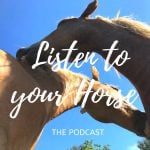
Your horses don’t need to meditate with you – they might be grazing or playing, it’s all good. You can either stand on the earth, or sit in a chair, on the ground, against a tree, etc.
If you’re standing – plant your feet evenly, hip width apart, pull up from your cervical spine at the back of your neck, which should lower your chin a little. You want to get your spine straight and your hips even – as much as is possible.
If you’re sitting – sit in a way that your spine is straight, and like the standing position, pull up from your cervical spine at the back of your neck, which should tuck your chin in towards your chest a bit. We want to get the spine straight (which automatically stacks your bones) so the energy can flow easily. Loosen your belt or undo the top button on your pants so you can breathe freely and deeply into your belly.
Either have your device on speakerphone, or only place your headphones in one ear. This is because you are going to become mindful of the sounds around you in the beginning.
Press PLAY on the mp3 and just follow along; I will guide you in what to imagine/visualize and when.
I have added about 5 minutes of silence/horse chewing on to the end of the recording, so you can just stay in that space for a while, if you like, or pull your headphones out of your ears if you want to stay longer.
If you enjoy this kind of guided meditation and want some more, feel free to check out the audios on my gut healing site.
And if you’d like a quick and beautiful one you can do right now, here’s one from Kesia that she shared on her recent Healing with Horse Tele Summit discussion:
Kesia Nagata’s Tree Connect Guided Meditation
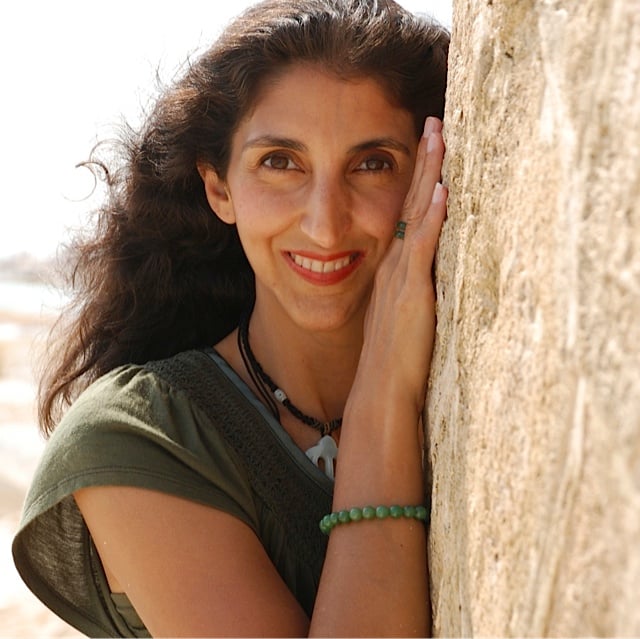
Jini Patel Thompson is a natural health writer and Lazer Tapping instructor. She began riding at age 2 in Kenya, and got her first horse at age 8 in Alberta, and so continues a life-long journey and love affair with these amazing creatures.


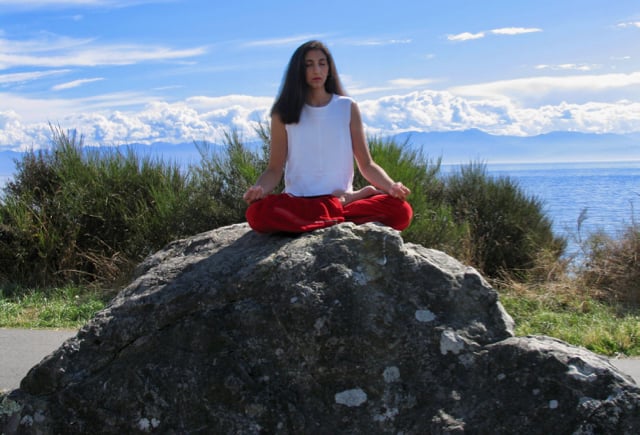
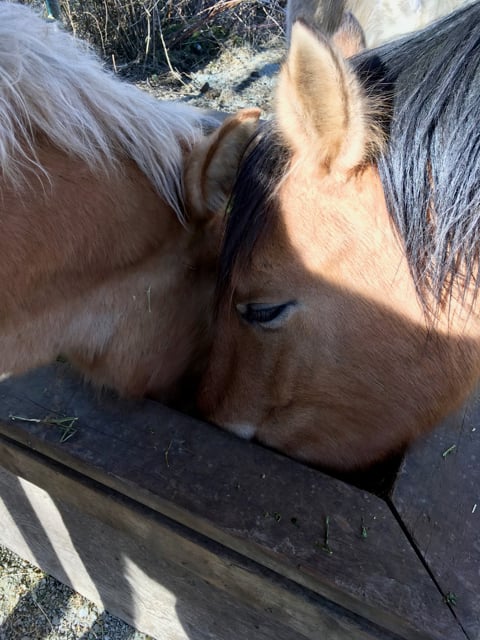




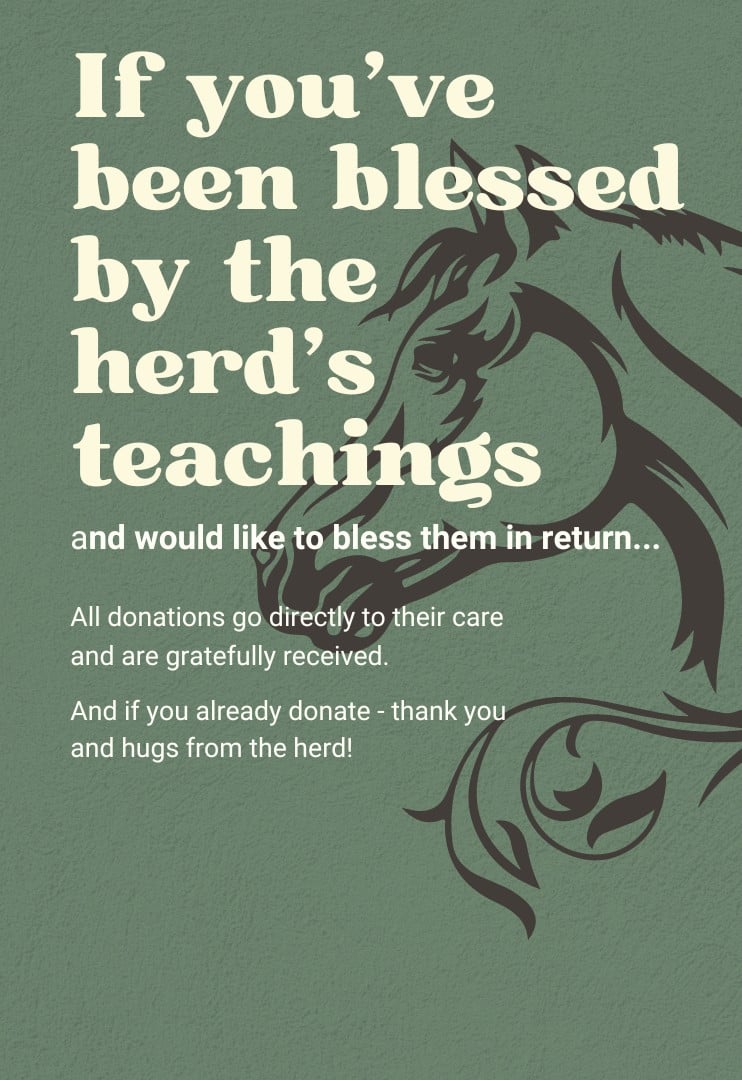
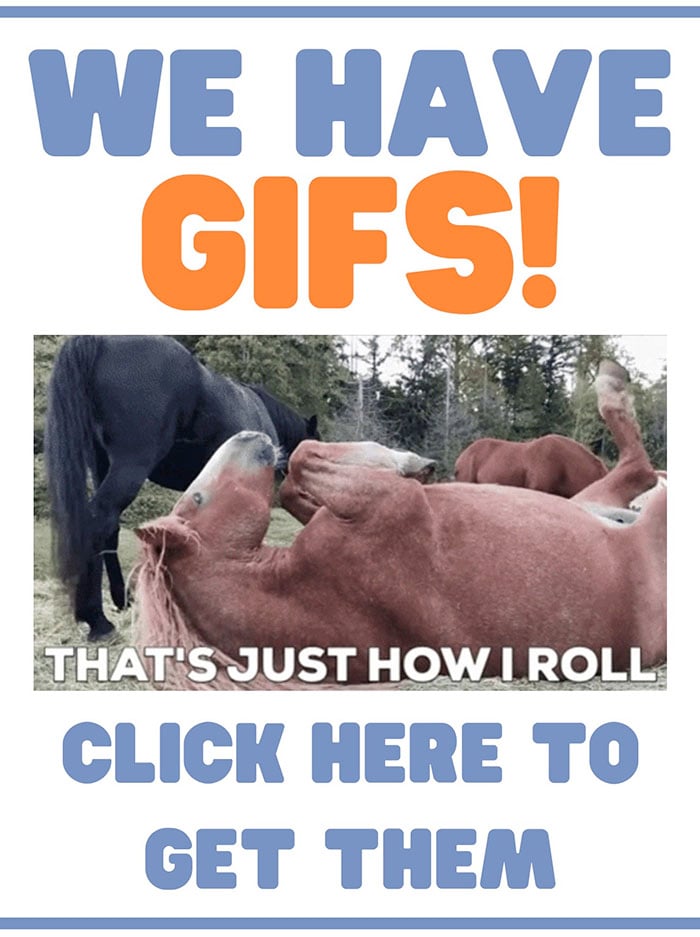
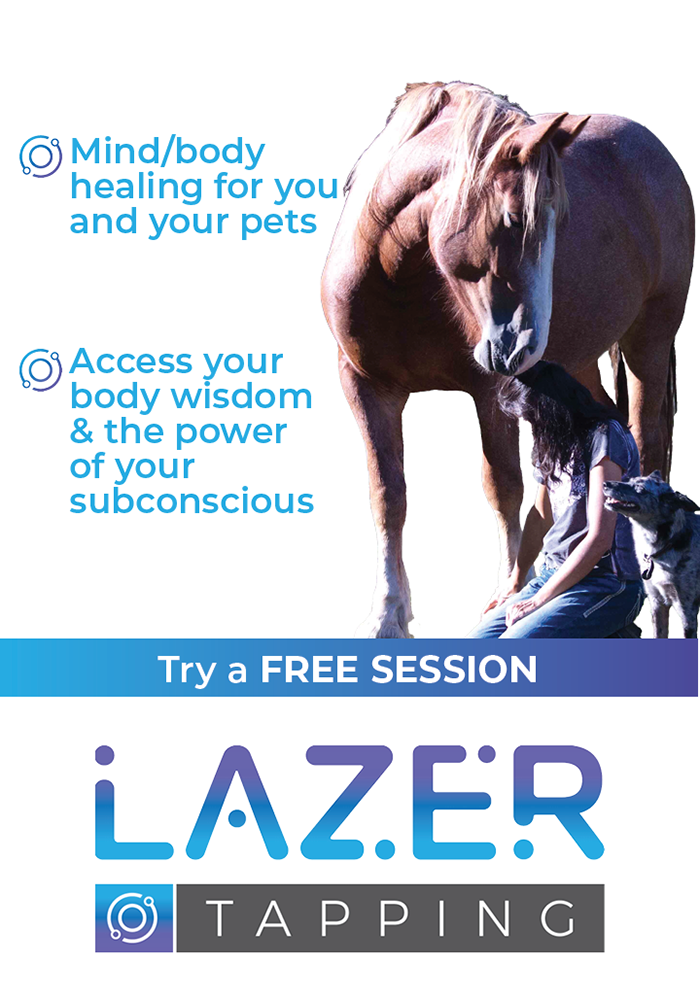
Jini – I love this guided meditation! I have always found the sound of horses chewing to be very soothing and meditative, so I love how you combined the two.
And as a Mindfulness Meditation Facilitator, I would like to mention that even the mind wandering, because that is what minds naturally do, or emotions arising – that too is part of being mindful – as soon as you are aware that your mind has wandered and you become aware of emotions coming up – then you are being mindful. I think meditation in general brings up confusion for people because they think that for meditation to be successful that you shouldn’t have any thoughts, and that just isn’t true – it is natural for the mind to think thoughts – however in mindfulness when we become aware of our thoughts – we note that – and then come back to the breath……………or any sounds we can hear…………..or body sensations…………and even some mindfulness meditations becoming aware of thoughts or emotions is part of a mindful meditation. It is the getting hooked or carried away by a stream of thinking where you get lost in thought that we are no longer here but somewhere else. And yes, I too have experienced the transcendent type of meditations where it appears you leave your body and go somewhere else. However, in this current cycle of my life I am appreciating mindfulness practice because it is about being embodied – aware of the body and sensations, aware of thoughts and emotions, aware of the breath and sounds.
And of course meditating with horses is the best! Being around them makes it so easy to drop in and become present and mindful. I would love to have a meditation ashram in the country someday with a great herd of horses and have people come and meditate.
Yes, exactly Shivam, thanks so much for jumping in and adding your experience. I know Jon Kabat-Zinn talks a lot about using mindfulness to stay fully present while you explore uncomfortable feelings or memories, etc. And I think this qualifier is the key:
“It is the getting hooked or carried away by a stream of thinking where you get lost in thought that we are no longer here but somewhere else.”
So thank you for so succinctly making the distinction between being mindful of current thoughts, emotions, etc. and being hooked/carried away – GREAT illustration.
And hey, what a great solution to the slaughter surplus – if ashrams and meditation centers realized how horses could potentiate the experience and each of them kept a herd simply for the purpose of holding that space! I LOVE it!!
Well done! I’m an advocate for horses to become more widely employed as spiritual guides. They are perfect priestesses and priests. They have zero ego and appear to be perpetually connected to the source. They’re mirror neurons and ours link easily, so their version of mindfulness and other meditative states-of-mind are readily picked up by our human minds.
When I’ve worked with horses to assist people to develop their own spiritual practices, it appears that the horses function sort of like a drivers’ ed. car that’s equipped with an extra steering wheel and brake for the instructor. In this metaphor the horses are both the car and the instructor. When stray thoughts threaten to hijack us, horses put on the brake and steer us back to here-and-now.
Our brains want to entrain with the horses’. Our thoughts tend to run interference. Horses interrupt our monkey-talk interference by enticing us back into the rhythm of the horses’ consciousness. The more time we spend there, the clearer the path becomes. What’s more intrinsically reinforcing than horse consciousness? Nothing that I’ve experienced, so far.
Being in horse consciousness for even a few minutes feels like finding HOME. For me, it’s the most consistent path to the divine. That’s been true for the clients I’ve done this with too. One of the most spectacular aspects of this phenomena is that it appears to cut through the mind frames that various mental illnesses hang themselves on. From what I’ve witnessed so far, folks don’t disappear their mental illnesses this way. They do however get to take a look at its effect on their feelings, thoughts and behaviors. With the help of a sensitive therapist or coach helping to frame the experience, people with severe illnesses can gain enough objectivity over their conditions to achieve a sense agency over their illnesses. This is critical to people developing the ability to direct their lives.
Shivam, we share a dream. I have had a recurring vision of a pasture. It’s about two or three-hundred acres with a willow-lined creek, a mixed hard and soft-wood forest, gentle, rolling hills and plenty of meadows. There are three or four barns with human habitation units in their lofts scattered around the pasture. One of them is designed to house students and guests. This is a place where people can come to transform their Dominion Delusions into authentic connectivity. I see this as a way to prepare the human mind to enter our next step in our evolution: reconnecting with our life-support system.
So far, this is a vision, a recurrent one. It has an energy of its own. It seems to have chosen several people to exercise it. I have a feeling several involved here are. I certainly don’t know if that means that any of us will actually manifest it. Maybe, or maybe we’ll inspire others. All I know is that one of my jobs in this lifetime is to push the ball forward.
Hey Pat,
I would love to let the horses facilitate something like this on the land I care for one day!
I have a long way to go but hearing others speak about it spurs me on.Thankyou.
Namaste
Erin 💚🌳🐎
Lovely- I agree thank you for replying in this thoughtful way
For awhile, my horses and I were in a rhythm of walking together from their night grazing down to the house for their breakfast – a lazy walk of 20 minutes or so. They often didn’t mind if I hitched a lift on one of them bareback. We all knew where we were going, so I didn’t really need to guide them. So, I began a practice of meditative riding. There’s little to tell beyond riding without judgement, of finding a mutual rhythm of breath, of finding a place of trust and calm. Like you, I have some unanswered ethical questions around riding, but this seemed okay, and I hope it was good for them, too.
I think if you and the horse are in a state of Oneness – then it is okay. If the horse looks forward to the next experience of Oneness, or asks for it – then it is more than okay, it is pleasurable, meaningful, or otherwise desired. I think this is a fabulous place/space to explore. 🙂
I can’t tell you how much I enjoyed this. I can’t wait for a new day to begin so I can have a go with my horses.
Let us know how it goes for you Deanna!
The best mantra I’ve ever found is the sound of a horse contentedly munching.
So true!!
moi aussi, ma chère. deep in the barn shelters during winter rains……safe, dry, Peace. Horse. Heart. YYYYYUUUUUUUUMMMMM xooxo sheila
Some people have a float tank, you have a meditation cocoon!
Hello, I truly love the horse pasture meditation. But when it gets to 8 min I don’t hear anything after that. Is it supposed to do this?
That’s great Virginia and yes, there’s just some blank minutes with horses munching in the background. That’s for you to just stay in that space for a while, if you want 🙂